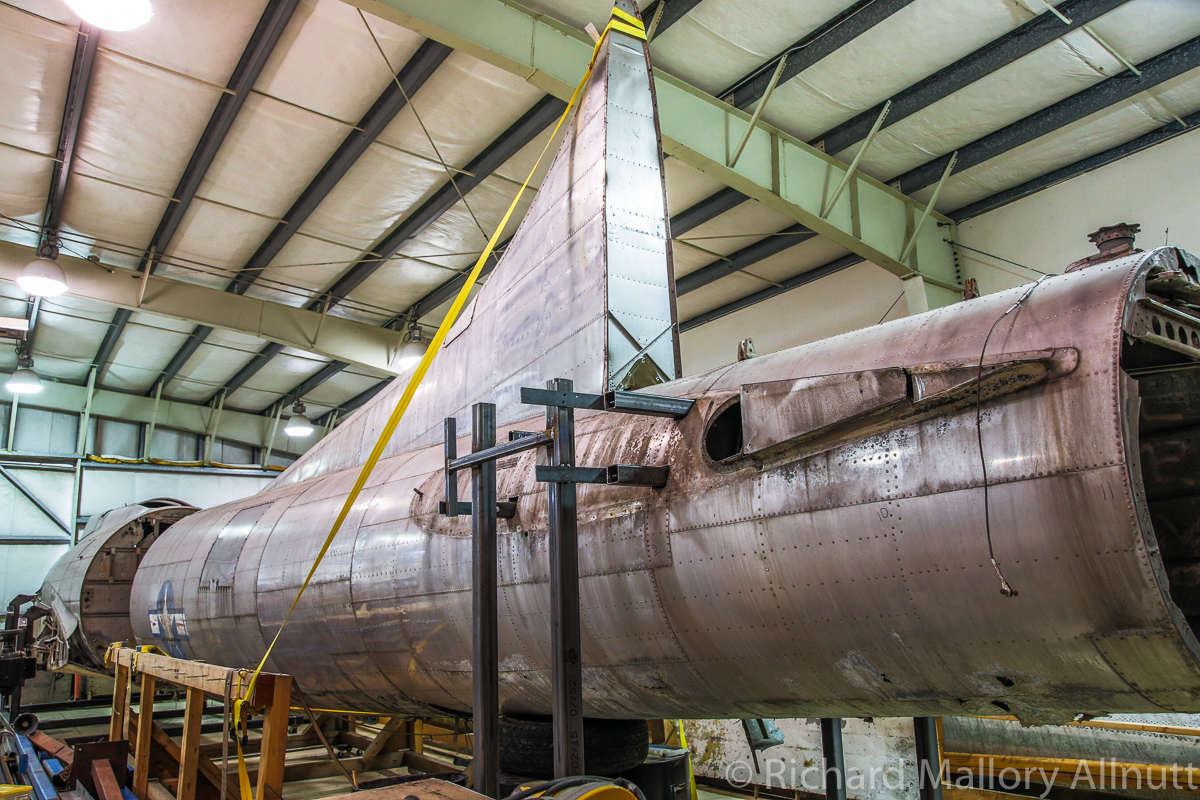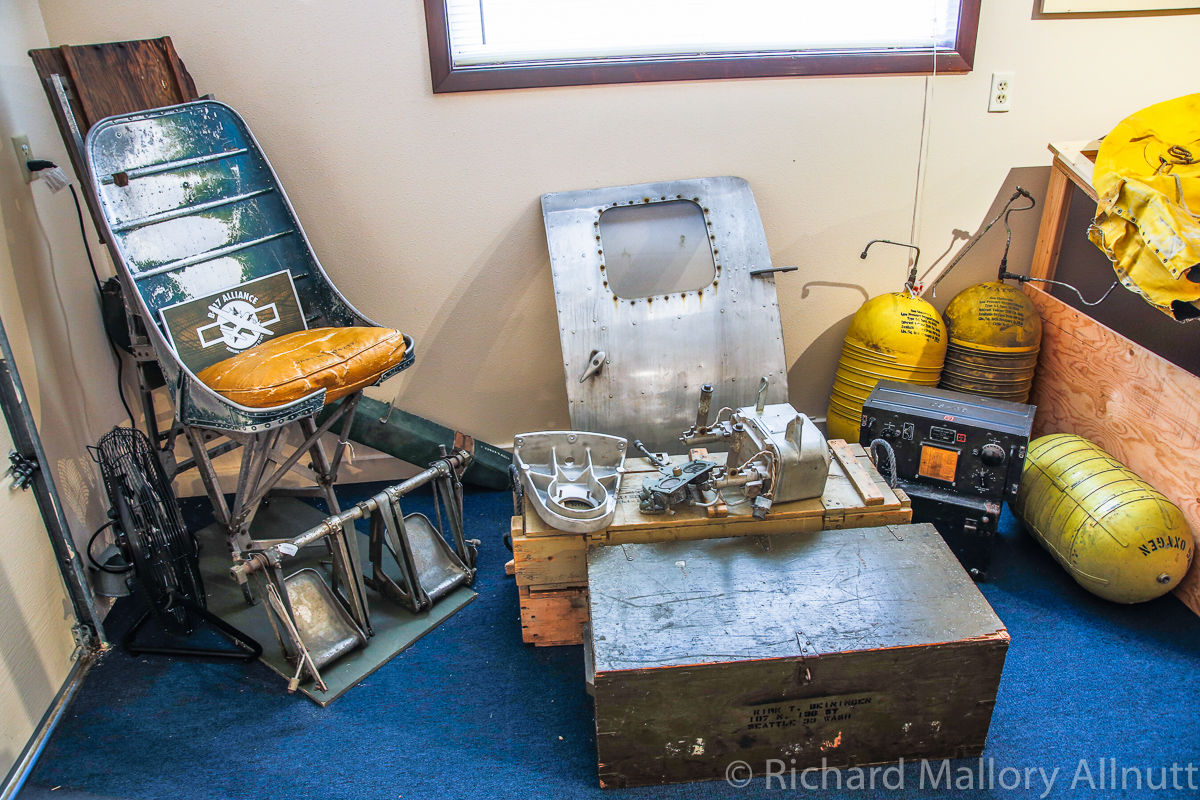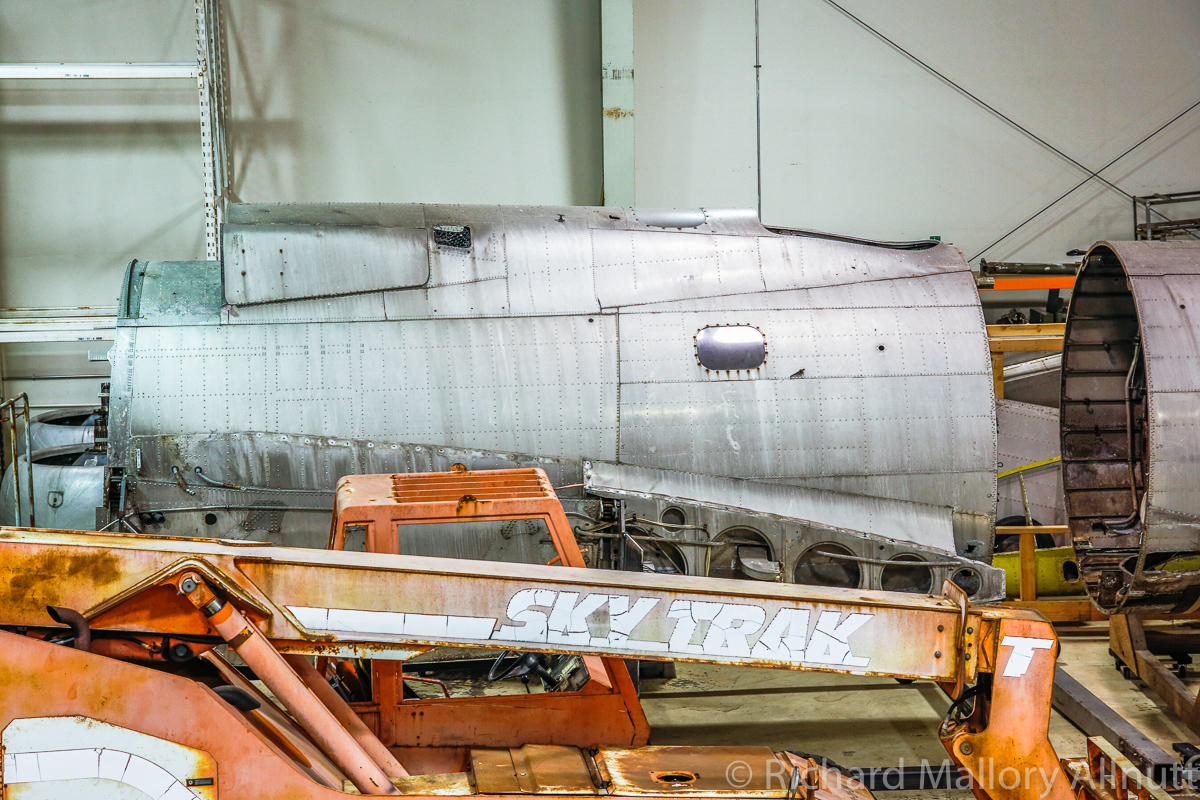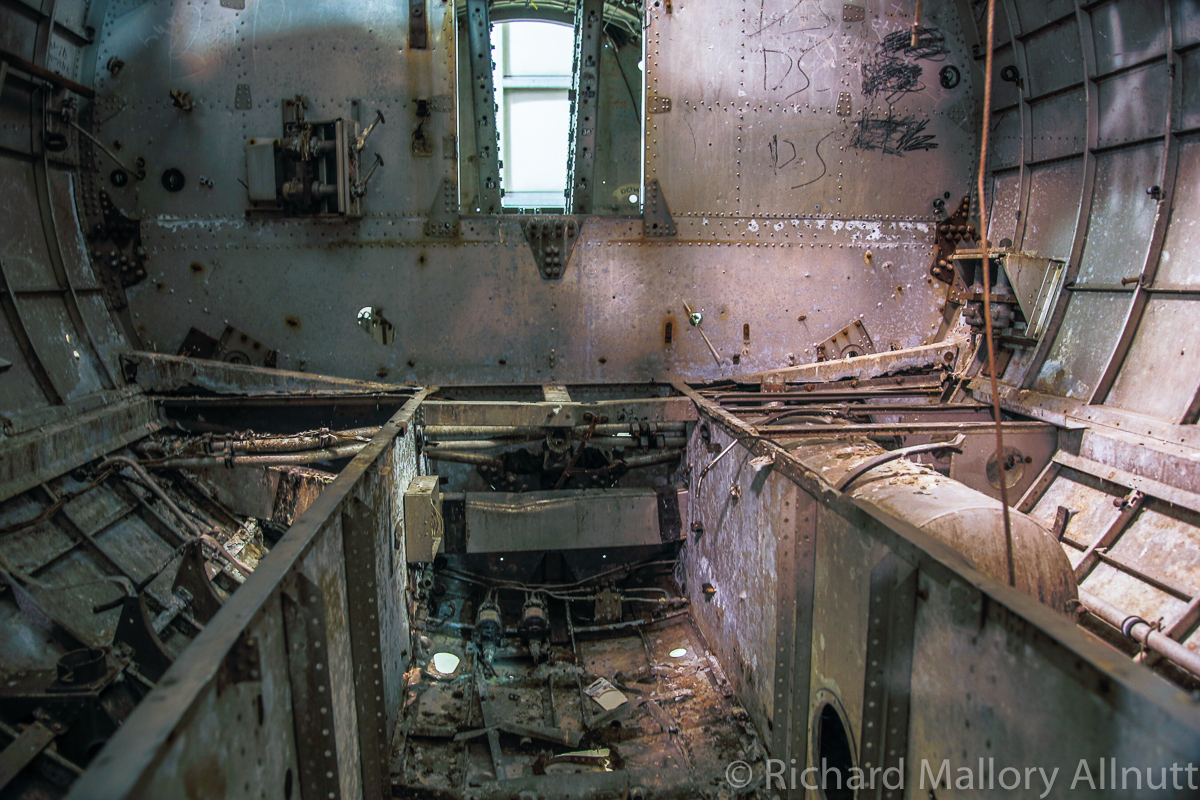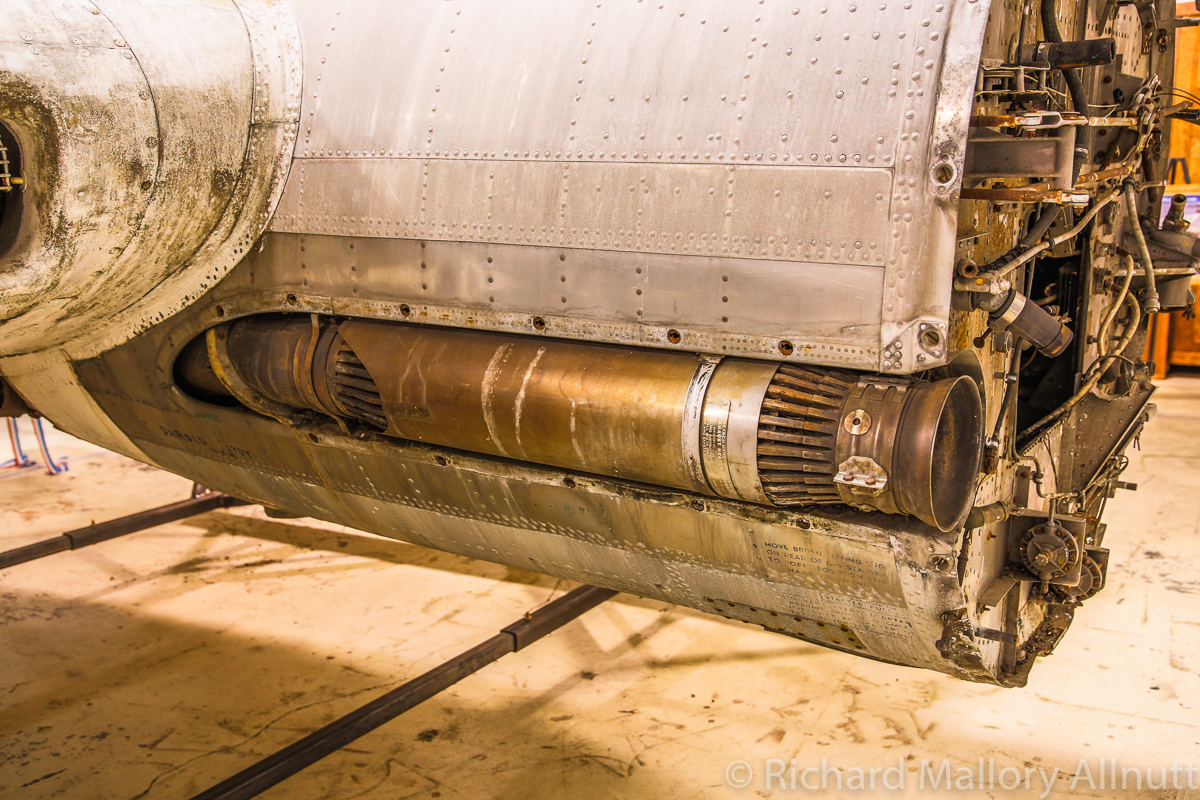WarbirdsNews has been following the saga of B-17G Lacey Lady for some time now. We paid a visit to our friends at the B-17 Alliance Group in September to check on her status. As most of our readers will know, this is the organization based at McNary Field in Salem, Oregon which is working on restoring the famous B-17G Flying Fortress known as Lacey Lady. The B-17, which sat atop a gas station in Milwaukie, Oregon for some six decades, finally came in from the cold last year, and is now safely stored inside. The B-17 Alliance Group has quickly established a small, but comprehensive museum in a room adjacent to the hangar, and is now hard at work preparing for the restoration.
The B-17 Alliance Group is coordinating their efforts with several other B-17 restoration projects, and have acquired a jig for the main fuselage in the process. They recently installed the fuselage in this jig, and now comes the hard graft of restoring the bomber. Wandering around the hangar, which is filled to bursting with B-17 parts and components, was a fascinating exercise. When you enter from the museum exhibition room, the first thing you see is the fully restored, forward nose section…
The cockpit section is already in its jig, and partially disassembled. This work occurred some years ago, but the task of restoration will soon become a priority again, now that the rest of the aircraft is securely in its new home.
As already noted, the restoration team recently fitted Lacey Lady’s main fuselage in a jig built up by the B-17 Alliance Group.
In going through the aircraft, it was fascinating to see how some parts had survived in nearly pristine condition, while others had clearly taken a beating from the elements, or other unfortunate problems. The rear fuselage in particular, showed some signs of the difficulty of the wet Oregon climate, as well as the results damage caused by a truck colliding with the fuselage when it once stood on the pilons at the gas station.
Overall, on a surface inspection at least, the wings look to be in much better condition than the fuselage, which is excellent news as the wings… like nearly every restoration project… will be what consumes most of the rebuild effort.
While it’s clear that this restoration represents a mammoth task involving many years of concerted effort, and certainly huge amounts of financial resources, it is also clear that the B-17 Alliance Group is capable of handling the task. They have moved forwards very quickly with the project. Just getting her down from her perch and indoors was a major accomplishment, but they’ve also established a viable museum and have a dedicated team ready for tackling this effort.
WarbirdsNews wishes to express our deep appreciation to Sean O’Brien for arranging our visit, and particularly to Bob Farmer for taking the time to show us around after a busy day at work. The B-17 Alliance Group has made remarkable progress in helping preserve this beautiful aircraft, and we wish them well in their endeavor to return her to flying condition. Please do consider donating to the project. To find out how you can contribute, please click HERE.







